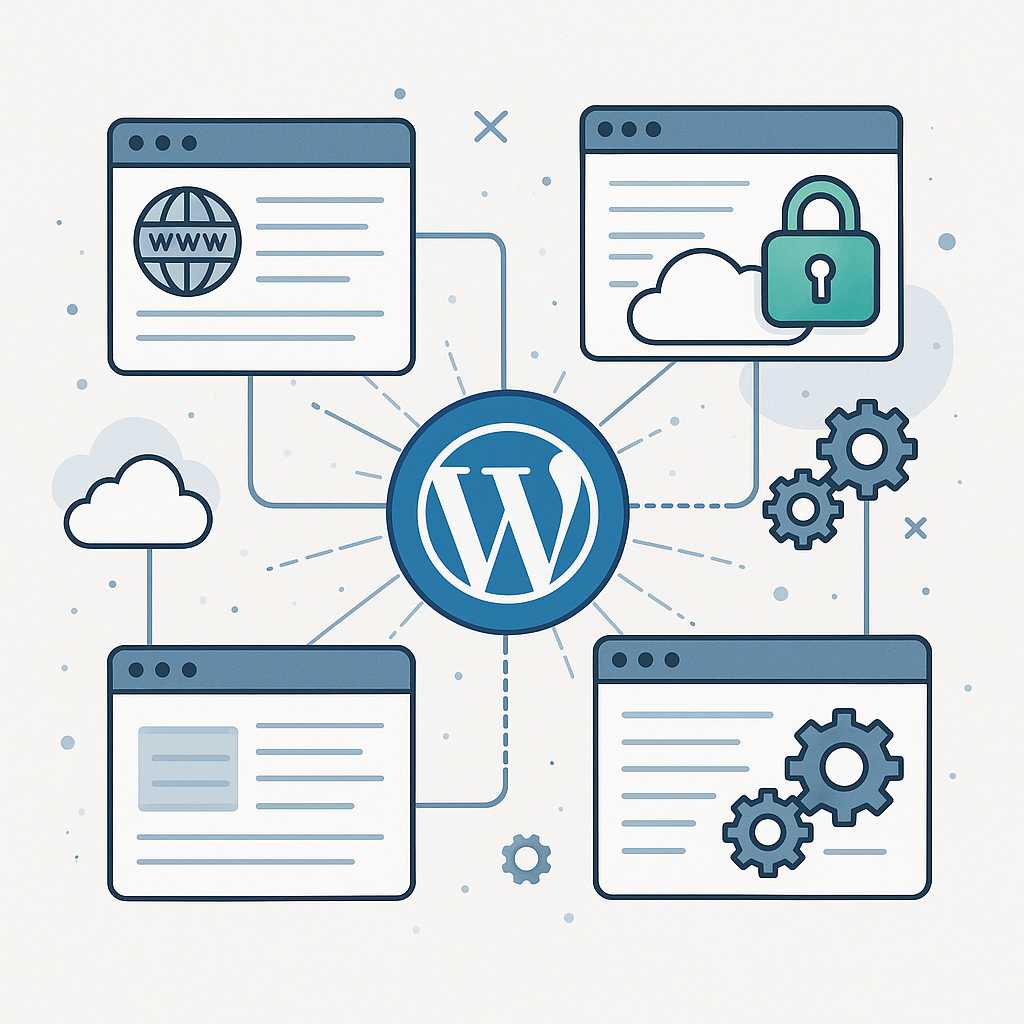WordPress Multisite is a powerful feature that allows you to create and manage a network of sites from a single WordPress installation. However, setting up and maintaining a Multisite network can introduce unique challenges not present with single-site installations. In this article, I’ll walk you through some of the most common issues faced with WordPress Multisite and provide solutions to help you keep your network running smoothly.
1. Domain Mapping Complications
One common pain point is domain mapping—connecting subsites to custom domains. Out of the box, WordPress supports subdirectory (example.com/site1) and subdomain (site1.example.com) configurations, but mapping totally separate domains requires plugins or custom code. If domain mapping isn’t working:
- Ensure you’re using a domain mapping plugin compatible with your version of WordPress.
- Verify DNS settings for each custom domain (e.g., proper A or CNAME records).
- Update site URLs in the WordPress dashboard and double-check
.htaccessrewrite rules.
2. File Upload Errors & Path Issues
Networked sites sometimes encounter issues where one or more subsites have trouble uploading media or accessing the correct upload directories. If you see file not found errors:
- Ensure the
wp-content/uploads/sites/directory has correct permissions (usually 755 for directories, 644 for files). - Double-check that your
wp-config.phpspecifies the correct domain and path settings for the network. - If the blog/site ID has changed, media from older uploads may be in a different directory—use a plugin or script to migrate them if needed.
3. Plugin and Theme Conflicts
Plugins and themes must be network activated or enabled individually per subsite. However, not all plugins are Multisite-compatible. To avoid conflicts:
- Test plugins and themes in a staging Multisite environment before activating on your production network.
- Avoid activating plugins network-wide unless they are fully compatible with Multisite.
- For block themes, use WordPress’s Site Editor to ensure patterns and templates are accessible across the network as needed.
4. SSL Certificates for Multiple Domains
Securing your Multisite with HTTPS is critical, especially when using custom domains. You may need to:
- Obtain a wildcard SSL certificate for subdomains (e.g.,
*.example.com). - For custom mapped domains, use a multi-domain (SAN) SSL certificate or individual SSL certificates via your hosting provider.
- Configure your web server (Apache/Nginx) to serve the correct certificates for each site.
5. Troubleshooting Login Issues
Sometimes users are redirected to the main site’s login screen or see persistent login errors on subsites. To resolve:
- Set the
COOKIE_DOMAINandCOOKIEPATHproperly inwp-config.phpor remove them if unnecessary. - Make sure browser cookies are enabled and not being blocked by security plugins or settings.
Final Thoughts
While WordPress Multisite brings powerful capabilities for managing multiple sites efficiently, it does introduce nuances that require careful configuration. Always back up your network before making major changes, and document customizations as your network grows. Need more help? Check out my previous article, “Networking WordPress Sites: A Comprehensive Guide to Multisite Configuration.”
Happy networking! – Presley


Leave a Reply